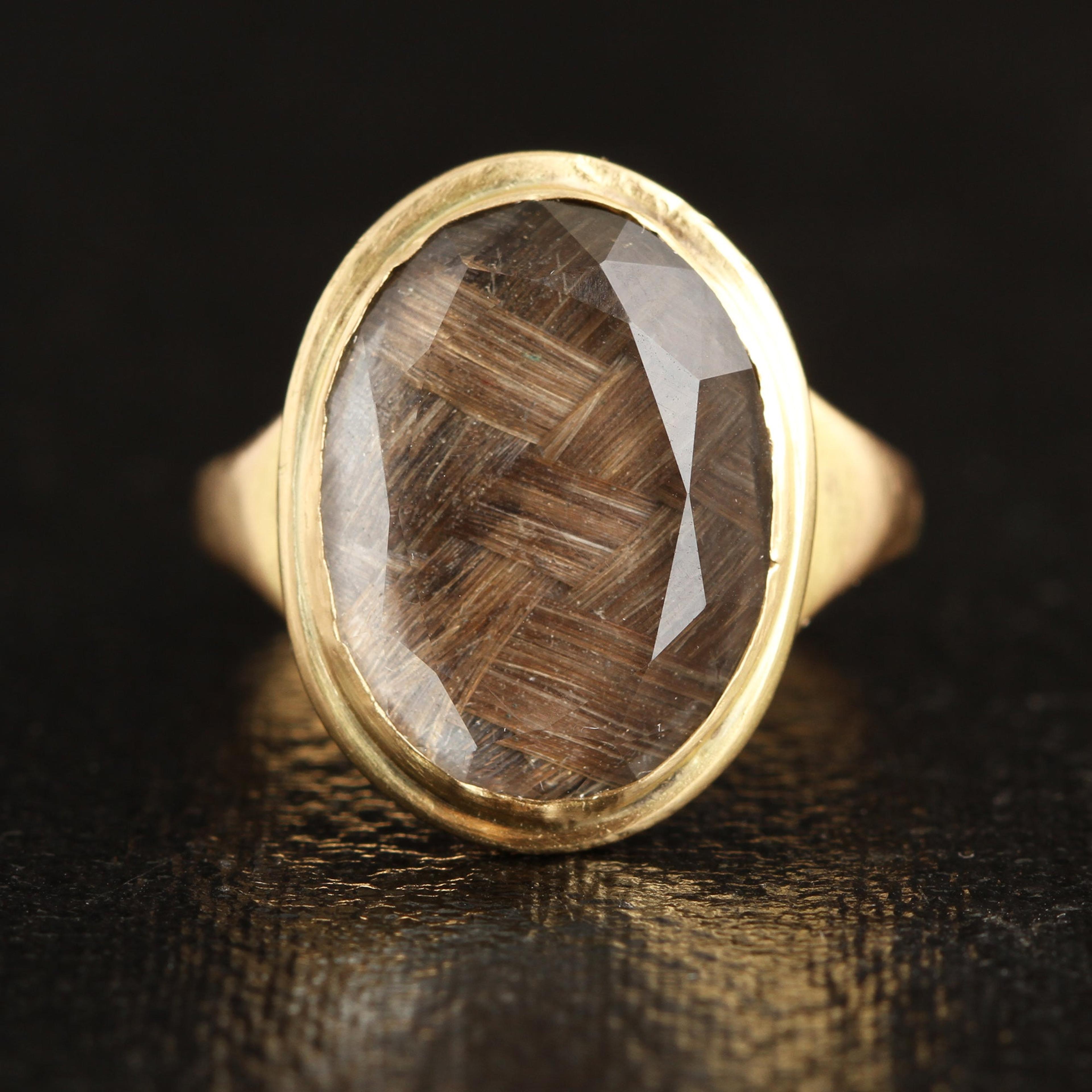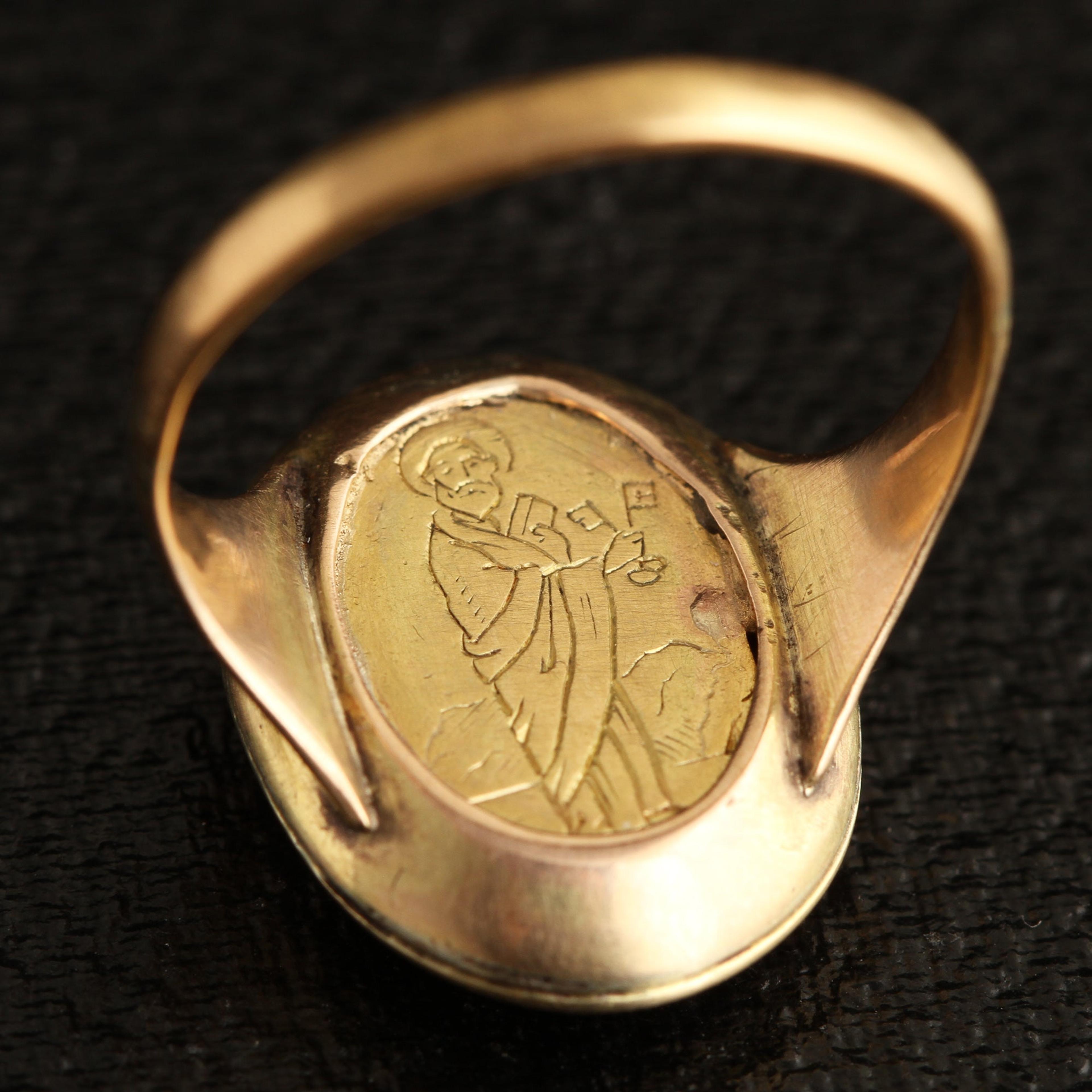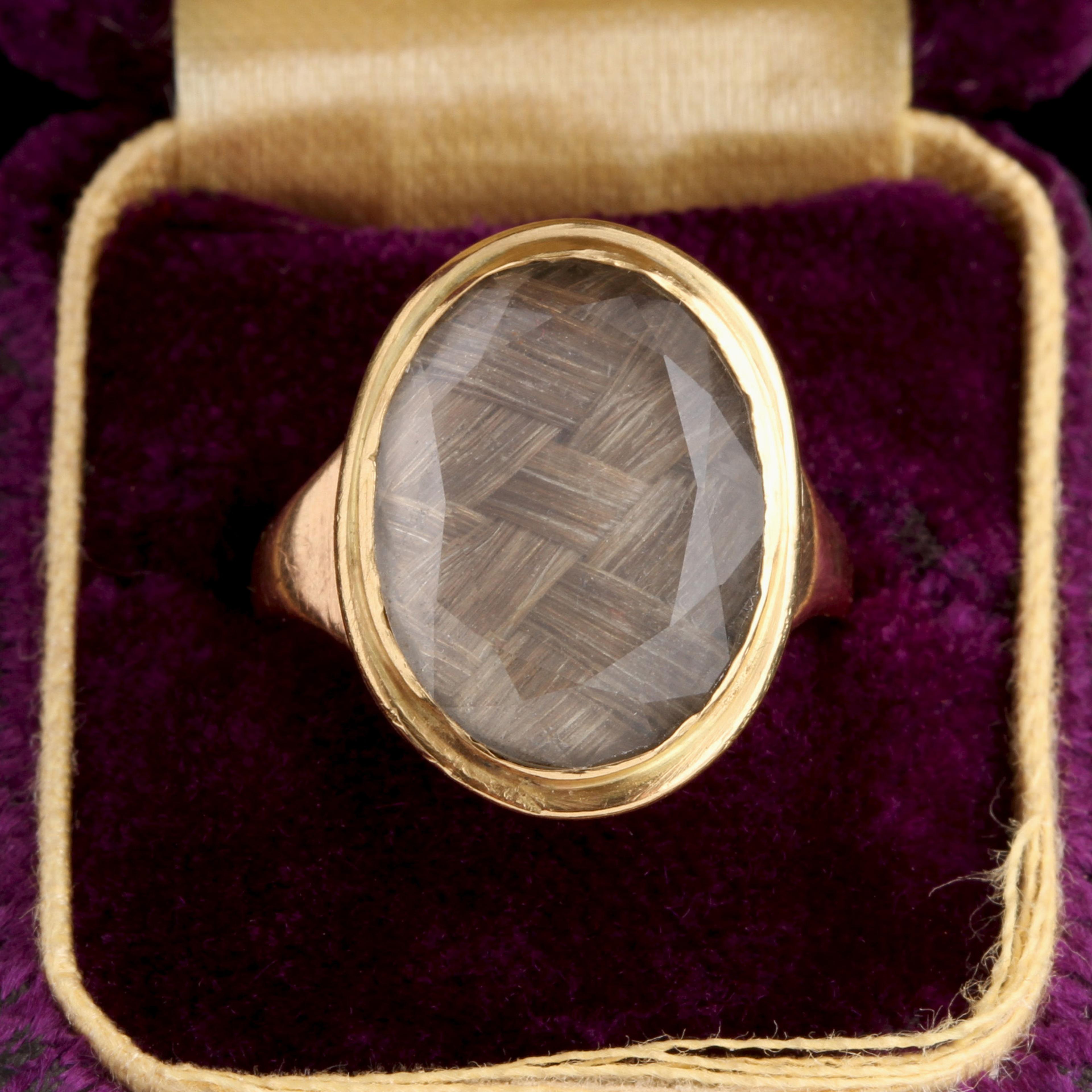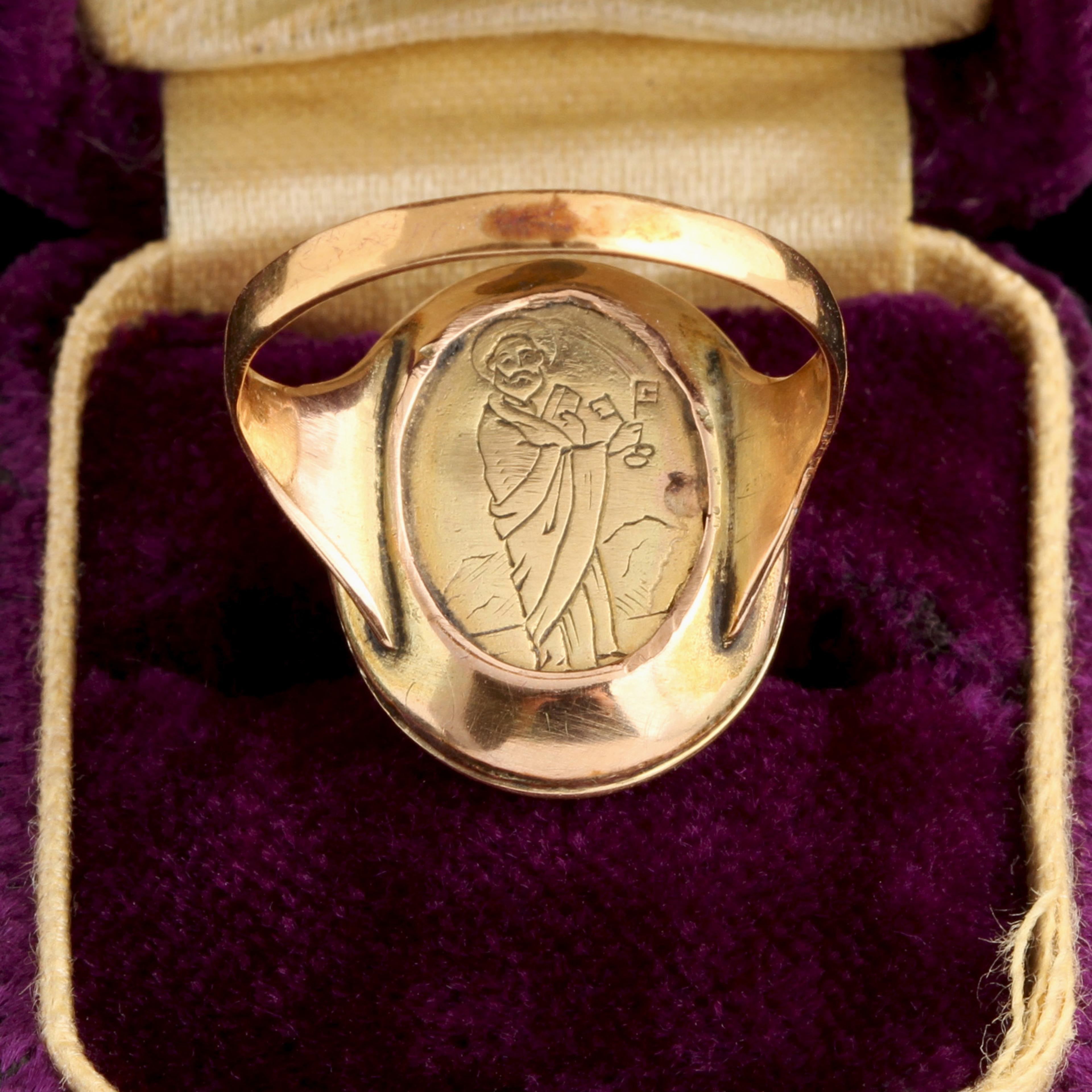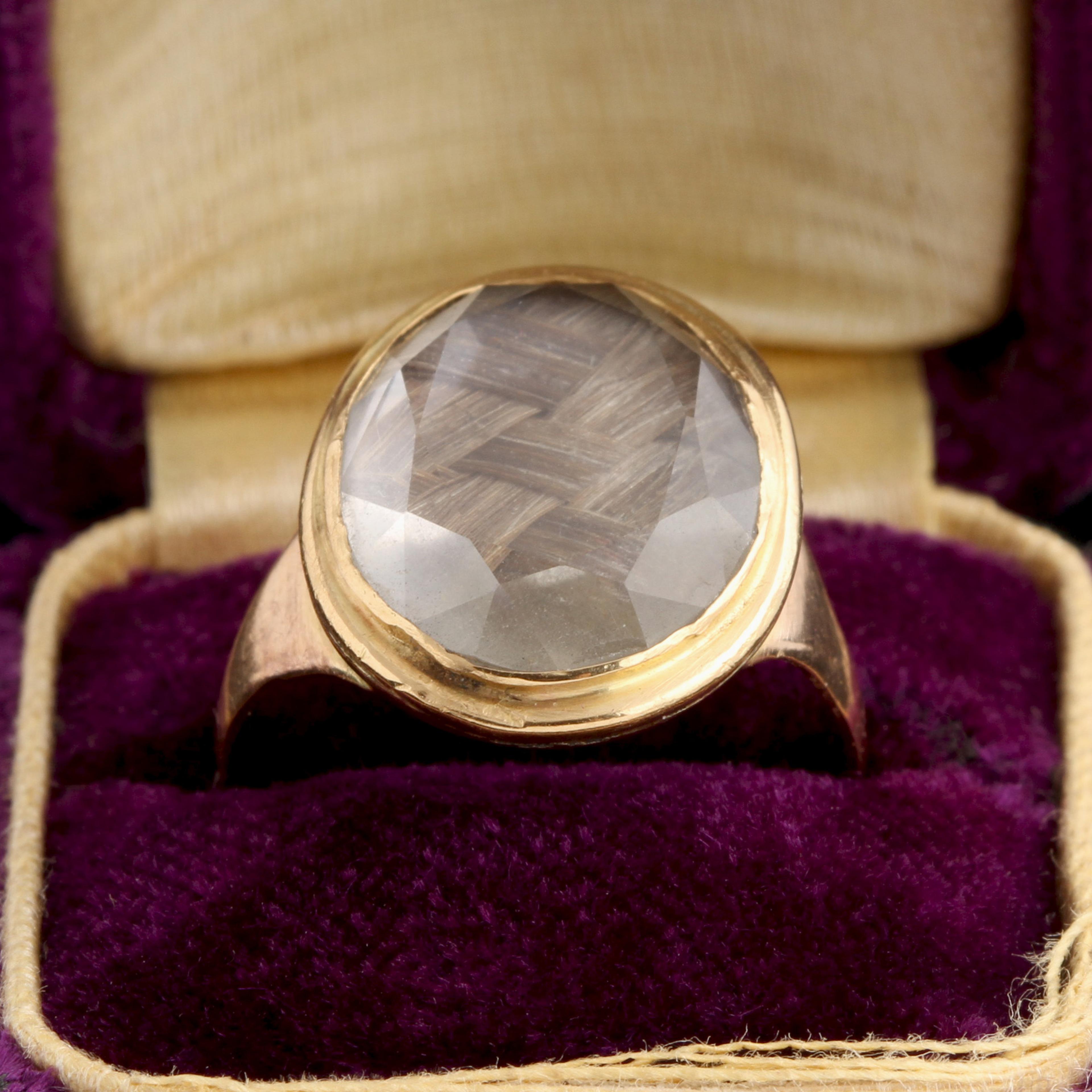Written at the same time this striking mourning ring was made, this quote from Godey’s Lady's Book beautifully describes the Victorian sentiment when it came to hair jewelry: “Hair is at once the most delicate and lasting of our materials and survives us like love. It is so light, so gentle, so escaping from the idea of death, that, with a lock of hair belonging to a child or friend, we may almost look to heaven and compare notes with angelic nature, may almost say: 'I have a piece of thee here, not unworthy of thy being now.'” With its large oval head and crisp rock crystal face encasing woven hair, this ring is arresting in its simplicity. Turn it over to discover what elevates it to the realm of the spectacular: an engraving of St Peter holding the keys to the gates of heaven.
thedetails
- Materials
18k yellow gold, rock crystal, hair
- Age
c. 1860
- Condition
Very good - spt of solder from a previous repair on the underside of the head, mark on the shank from a previous resizing
- Size
8.25, can be resized; head measures 2 x 1.4cm, 2.1mm shank
Need more photos?
Send us an email to request photos of this piece on a model.
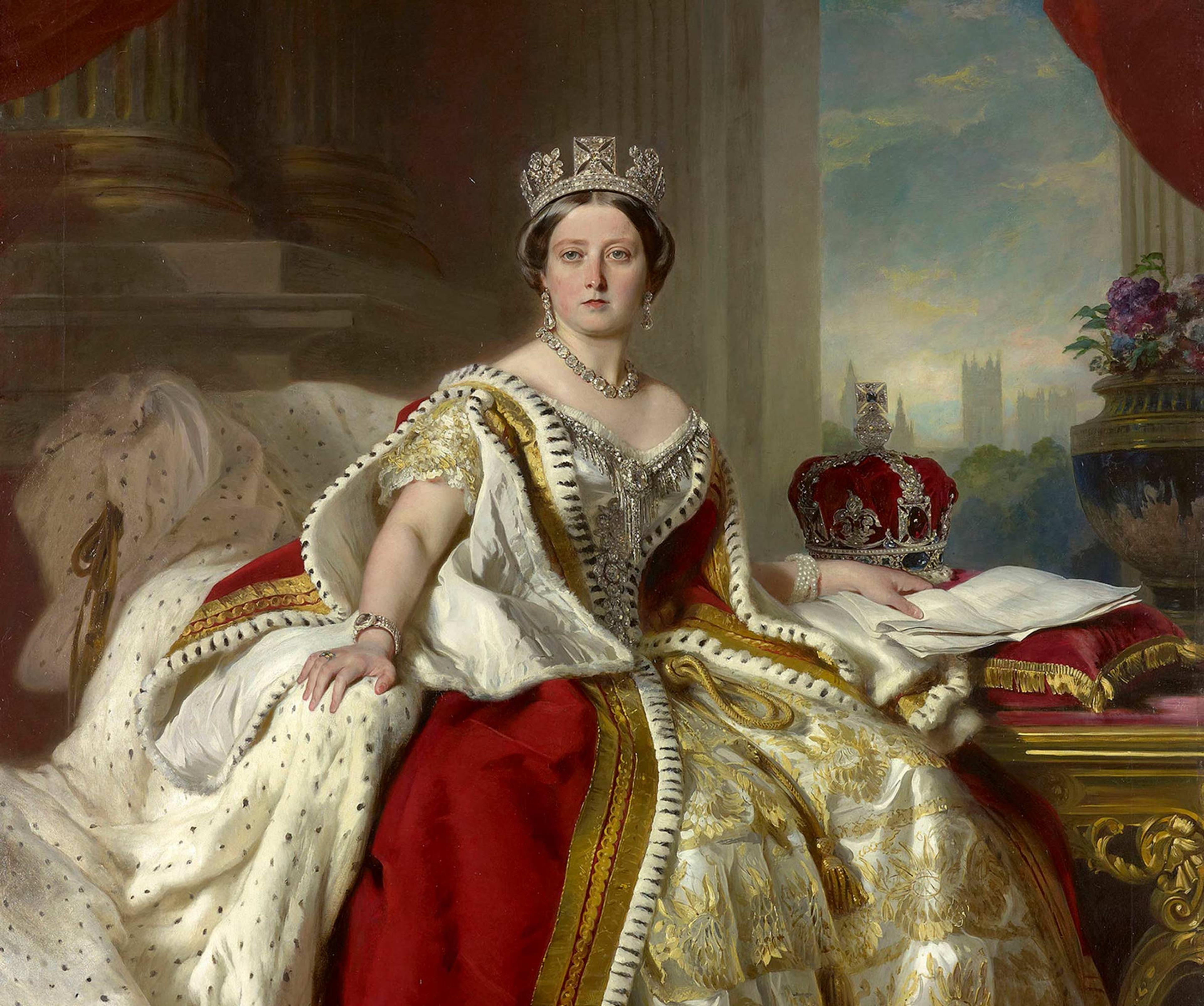
Aboutthe
VictorianEra
1837 — 1901
The Victorians were avid consumers and novelty-seekers, especially when it came to fashion, and numerous fads came and went throughout the 19th century. In jewelry, whatever fashion choices Queen V. made reverberated throughout the kingdom. The Romantic period reflected the queen’s legendary love for her husband, Albert.
Jewelry from this period featured joyful designs like flowers, hearts, and birds, all which often had symbolic meaning. The queen’s betrothal ring was made in the shape of a snake, which stood for love, fidelity, and eternity. The exuberant tone shifted after Prince Albert passed away in 1861, marking the beginning of the Grand Period. Black jewelry became de rigeur as the Queen and her subjects entered “mourning,” which at the time represented not just an emotional state, as we conceive of it today, but a specific manner of conduct and dress. She wore the color black for the remainder of her life, and we see lots of black onyx, enamel, jet, and gutta percha in the jewelry from this time. Finally, during the late Victorian period, which transitioned along with a rapidly changing world into the “Aesthetic Movement”, there was a return to organic and whimsical motifs: serpents, crescent moons, animals, and Japonaisserie designed for the more liberated “Gibson Girl”. During the second half of the 19th century, America entered the global jewelry market, with Tiffany and Co. leading the way. Lapidaries continued to perfect their techniques, and the old European cut emerged toward the end of the Victorian period. The discovery of rich diamond mines in South Africa made the colorless stones more accessible than ever before.
